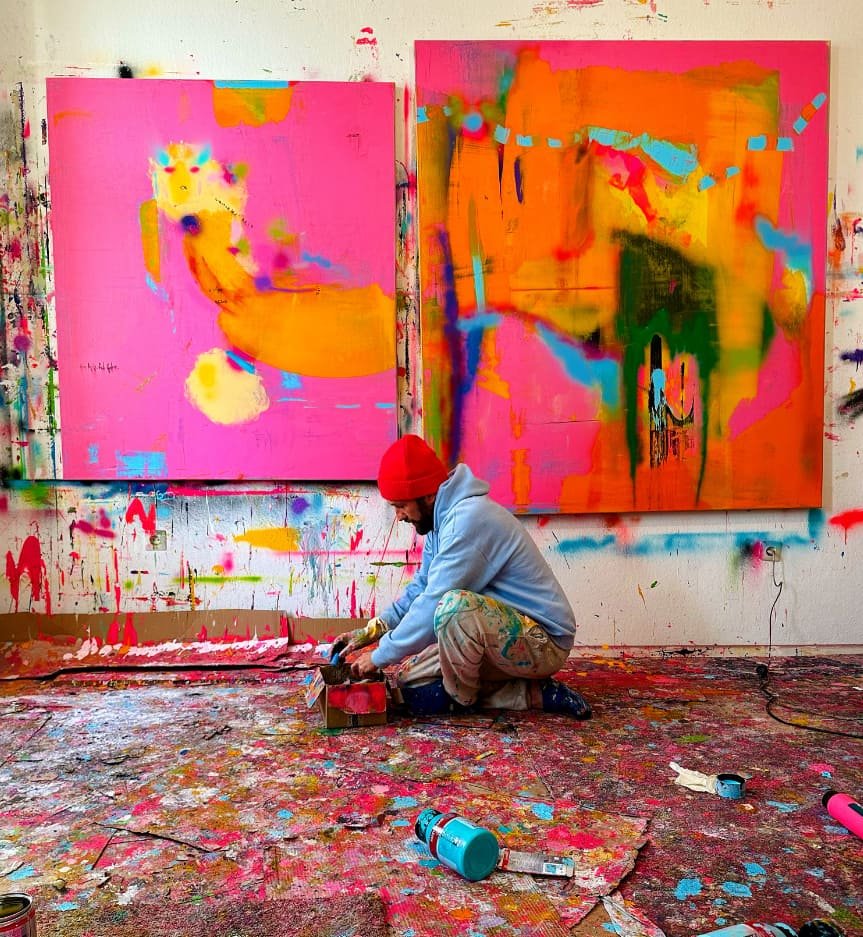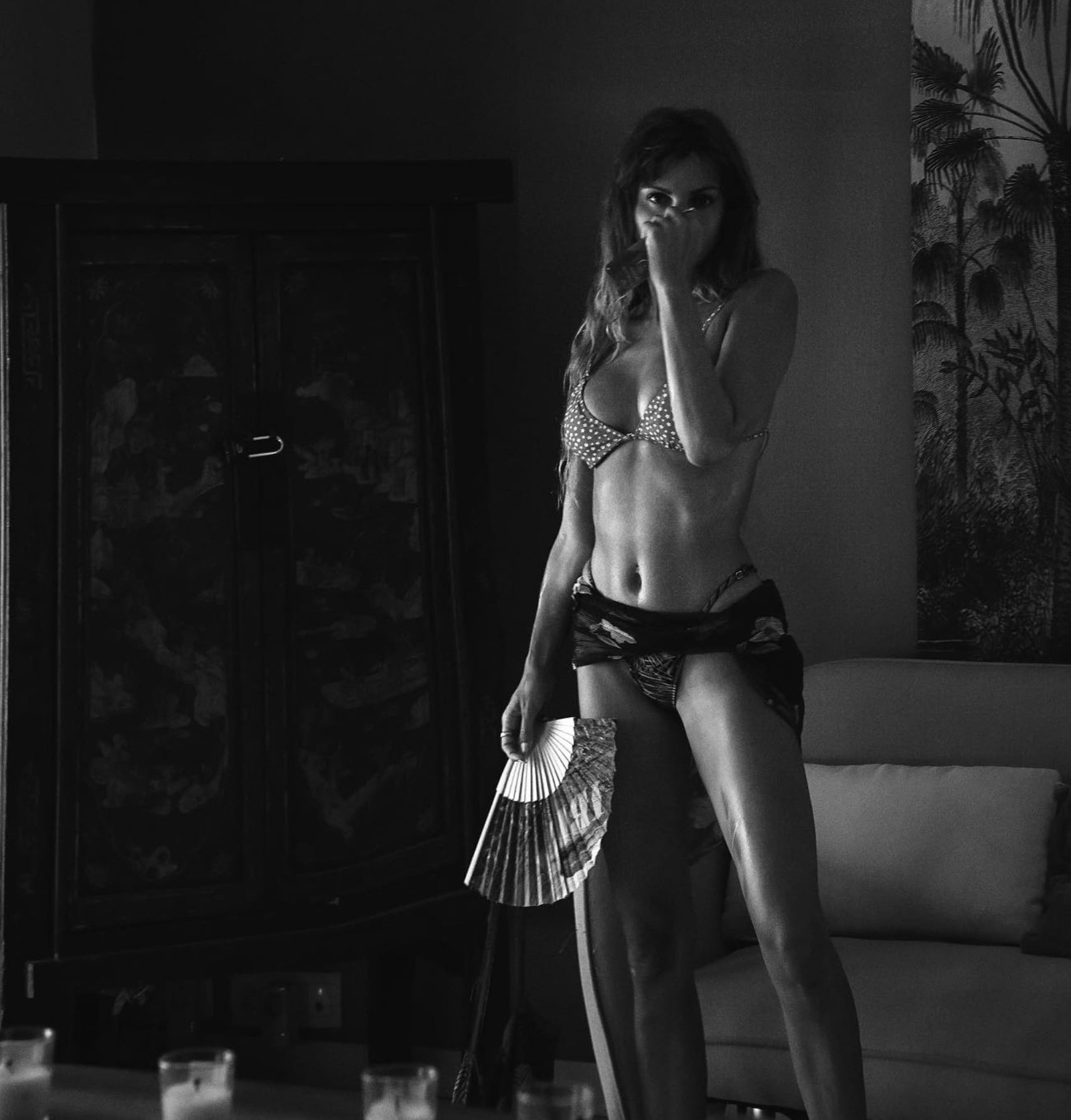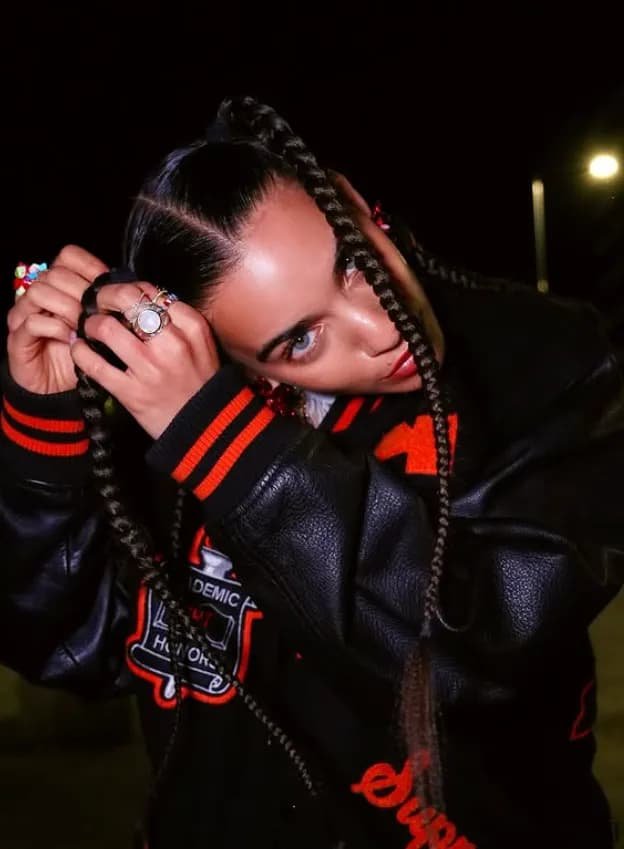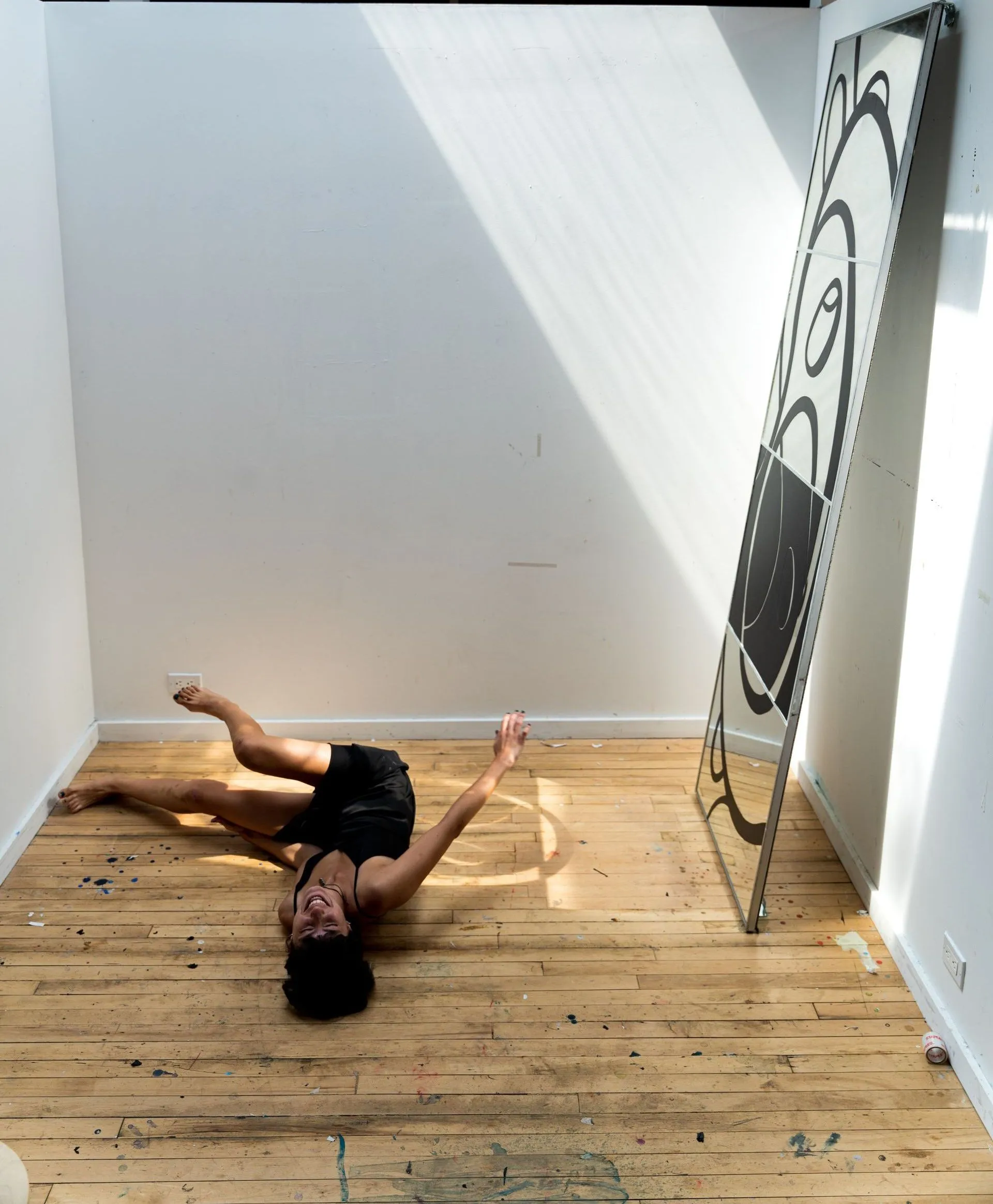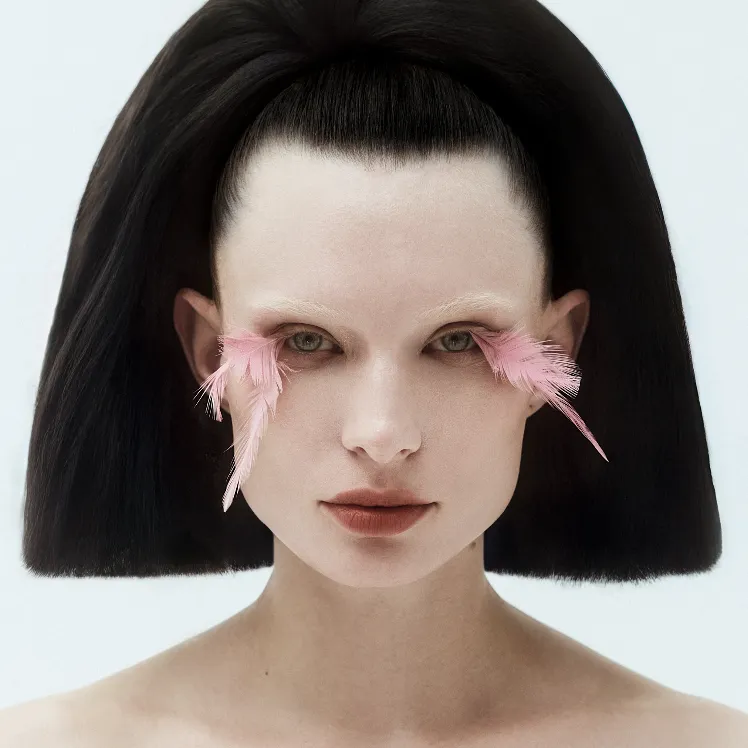What was it like growing up in Miami?
Do you remember the moment you realized your life was headed toward photography?
How did it find you? What stage of your life were you in?
Growing up in Miami was a beautiful experience — all my friends came from different Latin backgrounds. My best friend is Dominican, but I was surrounded by people from Colombia, Nicaragua, Cuba, Venezuela, Honduras… it was incredibly multicultural. That environment shaped how I see the world and made me feel proud of my roots. When I went to Florida State University in Tallahassee, it was a culture shock. It was a predominantly white school, and for the first time, I wasn’t surrounded by Latino culture. But that shift taught me a lot — especially about navigating different spaces, code-switching, and the importance of holding on to who you are. That experience ended up preparing me for New York and the fashion industry, which is also diverse but in a different way. I was actually on a pre-med track for three years, and photography started as a hobby. I picked up a camera toward the end of my freshman year and didn’t expect it to lead anywhere — but slowly, I found my voice through it. I became the fashion director for one of the campus magazines, and eventually I founded a student organization called Diverse World Fashion, which focused on culture and diversity in fashion. Looking back, it’s wild to see how that passion — for representation and storytelling — is still the foundation of what I do now.
How long did it take before you crossed that line where fashion photography became your living?
What barriers, struggles, how many NOs, how many “keep trying” or “you’re not good enough” moments have you faced to become the photographer you are today?
After college, I interned at a modeling agency — that’s where I started working with signed models and building my portfolio. At the time, the goal was to get paid through model testing while developing my own book. So when I moved to New York, that’s how I made a living in the beginning — working with agencies before clients came into the picture. Eventually, I booked my first big jobs with Oscar de la Renta and Ralph Lauren Polo. From there, things started to grow. I was fortunate to meet people who believed in my work and gave me opportunities. It took time, a lot of trial and error, and many moments of questioning myself. But slowly, the work started to speak for itself. Probably around five years ago is when I fully crossed into doing photography full-time — not just creatively, but as a sustainable career.
What impact did moving to New York have on you?
New York is incredibly inspiring — especially for a photographer trying to grow. There are so many creatives here who genuinely want to collaborate and build something meaningful. I’ve met some of my closest friends in this city, all working in different corners of the industry. It’s beautiful to be surrounded by people who are hungry to be the best at what they do. That energy motivated me to push myself even harder. But New York can also break you — and that’s part of the journey. It’s humbling. I had to learn how to be responsible with budgeting, how to manage the constant hustle, and how to keep going when things felt overwhelming. This city doesn’t stop for anyone, so you learn quickly to adapt, grow, and push through. That resilience is something I’ll always carry with me.
What does beauty mean to you?
Do you explore different, personal concepts of beauty?
Beauty is incredibly subjective — and that’s something I learned early on. The industry still has a lot of control over what we see, which is why I always try to push for diversity when I get the chance. In my personal work, I focus on portraits and projects that reflect the kind of representation I want to see in fashion. That said, I appreciate all forms of beauty. It’s not about only highlighting minorities — it’s about making sure they’re included. It gets tiring when the same type of model is cast over and over again. There’s so much range out there, and I think fashion is more powerful when it reflects that. Over time, I’ve found a formula that works for me. I shoot a lot of celebrities, so I’ve developed a versatile aesthetic that can meet the expectations of commercial clients while still maintaining an editorial point of view.
What role does color play, and what choices most define your style?
How do you approach creative direction in a project?
I love shooting in color — especially since I started out shooting analog when I moved to New York. I used to hand-print my photos in a lab, and that process really taught me how color behaves, how it reacts to light, and what tones feel most alive. There are certain hues I always gravitate toward — rich, warm tones, deep shadows — because I know how they’ll translate in the final image. Creative direction always shifts depending on the project. Sometimes it starts with the model — their look, their energy — and then grows from there. I love working closely with stylists and glam; we all pitch in our ideas, and the final image becomes a blend of all our visions. As for inspiration, it often comes from memory — a moment I lived, something I felt growing up, or even a conversation that stuck with me.
I’m drawn to things that feel nostalgic or deeply human.
What does a moment of creative depression feel like for you?
Creative depression is real — especially as a freelance artist. When things slow down, it can hit hard. I’m happiest when I’m on set, when there’s movement, energy, and ideas bouncing around. That creative high is something I genuinely crave. I’ve never questioned whether this is the right path for me — I know deep down that this is what I’m meant to be doing. But I’m still learning how to balance the downtime, how to stay grounded and productive when things aren’t as fast-paced.
What have you lost — or what have you had to give up — to have what you have today?
Being away from my family has definitely been one of the hardest parts. I’m really close to my mom, and missing out on everyday moments with her — and with the rest of my family — is something that never gets easier. But I knew I had to move to New York to make my dreams a reality. It was a sacrifice I had to make to grow in this industry and build the life I wanted. I try to visit Miami and Colombia as often as I can. That connection keeps me grounded — it reminds me why I work so hard and who I’m doing it for.
What kind of people do you choose to work and surround yourself with today?
I’m very sensitive to energy — I’ve always been a bit of an empath. People tell me it’s a strength, and I think it is, but it also means I need to feel a real connection with the people I work with. I like to know that we share a similar vision, aesthetic, and level of care for the final outcome of the project. Peace is really important to me, especially on set. That’s why having a trusted team — my lighting crew, assistants, people I’ve worked with before — is a must. It allows me to focus fully on the creative without having to worry about the chaos around me. They help protect that energy for me, and I’m really grateful for that.
What’s the hardest thing to protect in your creative process?
And what does a model need to have in order to fit into your visual universe?
I’m fortunate to have clients — both in the publishing and commercial world — who trust me to shoot in my own way and let me showcase my art through their brand or magazine. That kind of trust allows me to stay connected to my creative vision. I try to shoot film whenever I can and be hands-on with casting, because those details are a big part of what makes my work feel personal and true to me. When it comes to models, it’s not just about having a good look — it’s about the emotion and confidence they bring to the image. I love working with people who aren’t afraid to be a little silly, who understand the assignment and let themselves be free in front of the camera. Especially with male models, I appreciate when they’re open to tapping into their softer or more feminine side — it brings a whole new dynamic to the shoot.
Do you feel you’re still building your visual language, or has it already been defined?
I’m definitely still building it — and honestly, I hope I never stop. I don’t ever want to feel complacent with my work. I want to keep growing, even as I get older. That’s one of the things I love most about this industry: there’s always room to explore, to try new things, to evolve. Some things stick and become part of your visual identity, while others push you to keep reinventing. That process keeps it exciting.
What inspires you beyond photography?
Family, friends, and traveling are the best parts of my life — they keep me going. Those experiences bring me joy, and for me, that’s the most important part of being human. It’s not always about the work, even though my career is a huge part of my life and constantly on my mind. But those personal moments ground me. They remind me to step back and focus on what truly matters. Staying connected to the people I love and creating memories outside of photography — that’s what makes me feel alive.
If tomorrow the entire industry shut down, and you had to keep creating just for yourself, what would those images look like?
I think I’d keep focusing on portraiture — capturing all types of beauty, whether it’s models or subcultures, people from different walks of life. I’d love to travel the world and photograph freely — street casting, documenting dance teams, communities, traditions. Just tapping into different worlds and telling their stories through my lens. A few years ago, I went to Tahiti and photographed a local dance team in their traditional wardrobe. It was such a fulfilling experience. I left feeling so inspired and so clear that this is what I want to keep doing — creating work that feels rooted in culture, connection,
and real human expression.
When you were a child, what did you dream of becoming? And today, how do you remember yourself at that age? What word defines your entire evolution?
As a kid, I was obsessed with animals — especially dolphins. I used to say I wanted to be a marine biologist. I was always outside, catching lizards, swimming in the pool or lake near my house. I had so much energy, and I was genuinely a happy kid. Looking back, I see that same curiosity and excitement still in me — just expressed differently now through photography. If I had to choose one word to define my evolution, it would be intentional. Everything I do now — creatively and personally — comes from a place of purpose.





